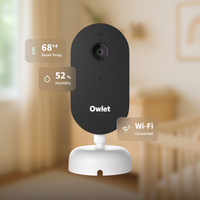The content provided on this blog is intended for informational and educational purposes only. It is not a substitute for professional medical advice, diagnosis, or treatment. Always seek the advice of a qualified healthcare provider with any questions you may have and to learn more about your child's specific needs.
Just when your baby’s sleep seems to be on track, things can suddenly shift—more night wakings, skipped naps, or bedtime drama. Two big reasons? Teething and sleep regressions. And yes, they often happen at the same time (fun, right?).
Teething: Why It Disrupts Sleep
Teething often starts between 4–7 months. Common signs:
-
Drooling
-
Chewing on everything
-
Fussiness
-
Swollen gums
-
Occasional low-grade fever
Teething pain is often worse at night and can lead to frequent wakeups or clinginess.
Sleep Regressions: A Sign of Growth
Sleep regressions are temporary disruptions linked to developmental leaps. You’ll often notice changes around:
-
4 months: sleep cycle shifts
-
8–10 months: crawling, separation anxiety
-
12 months: walking
-
18–24 months: language and independence
Your baby might resist naps, wake up more, or suddenly need more comfort.
Double Trouble: Teething + Regressions
These challenges often overlap—like molars coming in during the toddler sleep regression. It can be tough to tell what’s causing the sleep struggles, but the support you offer matters either way.
How to Help Your Baby Sleep Through Teething and Regressions
While you can’t avoid teething or regressions, you can offer support and consistency:
1. Comfort and soothe
Offer extra cuddles, nursing, or bottle feeds if needed. Teething babies often want comfort. Use teething toys, cold washcloths, or pain relievers (consult your pediatrician first) if you suspect teething pain.
2. Stick to your bedtime routine
Consistency helps babies feel secure during unpredictable times. A familiar routine signals that it’s time to sleep, even if they’re fussy.
3. Watch wake windows
Sleep regressions can mess with sleep needs. Keep an eye on how long your baby is awake between naps and adjust as needed.
4. Offer support—but don’t start new habits you don’t want to keep
It’s okay to offer more comfort during tough nights, but try not to start habits (like rocking to sleep every time) unless you’re okay continuing them later.
5. Take care of yourself
Interrupted sleep is hard on everyone. Ask for help, nap when you can, and know that this stage—like all baby stages—is temporary.
Peace of Mind While They Sleep
If you're struggling to figure out what's going on, Dream Sock® can help. It tracks your baby’s sleep trends, pulse rate, and oxygen levels—so you can better understand their nights and rest a little easier yourself. When teething or regressions strike, having real-time insights can make all the difference.
Final Thoughts
Teething and sleep regressions are tough—but temporary. Your baby will find their rhythm again, and you’re doing an amazing job through it all.
And when things feel extra hard? Coffee, baby snuggles, and a little tech support go a long way.












